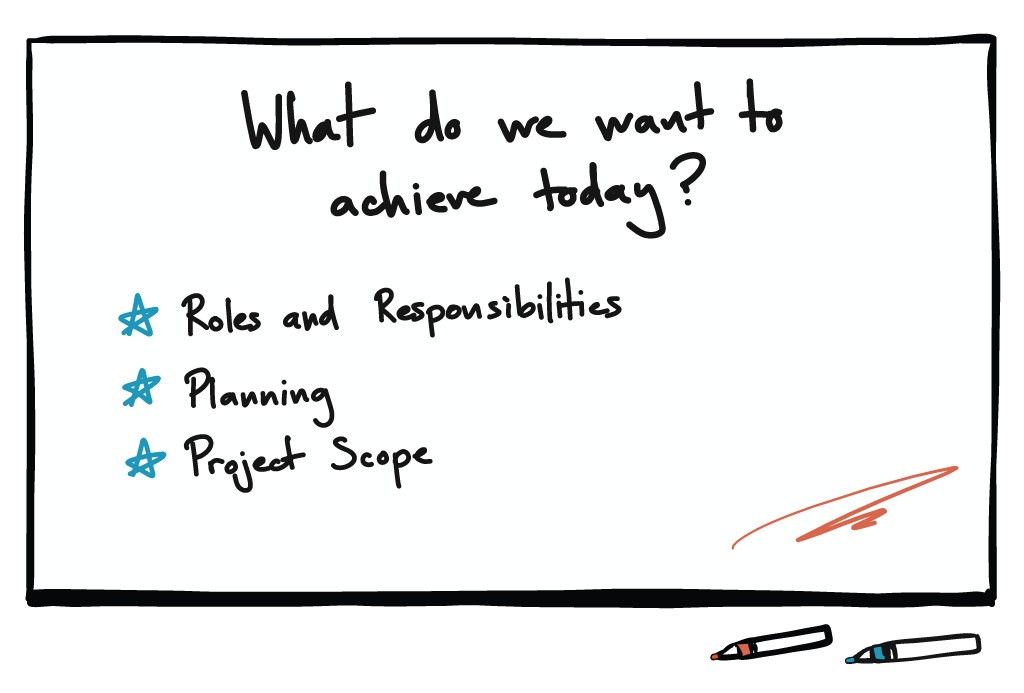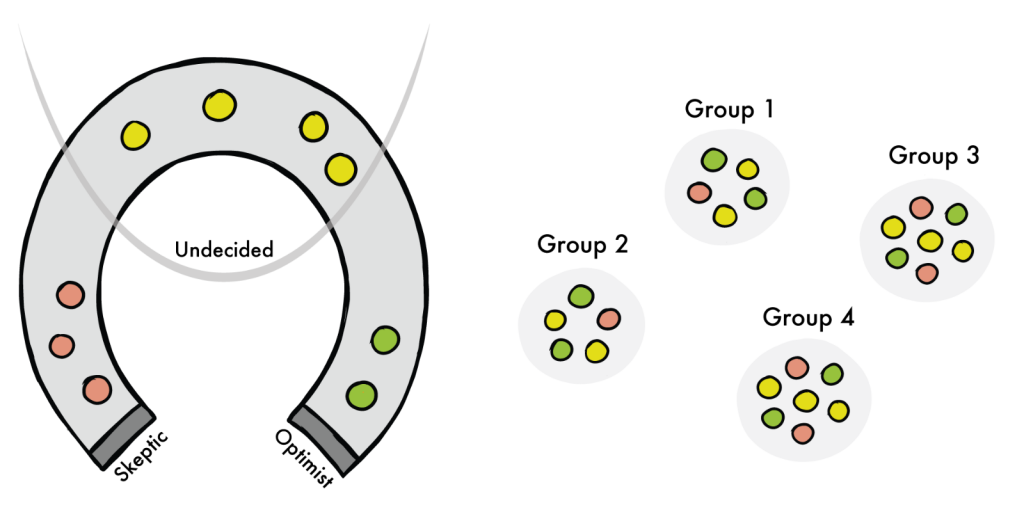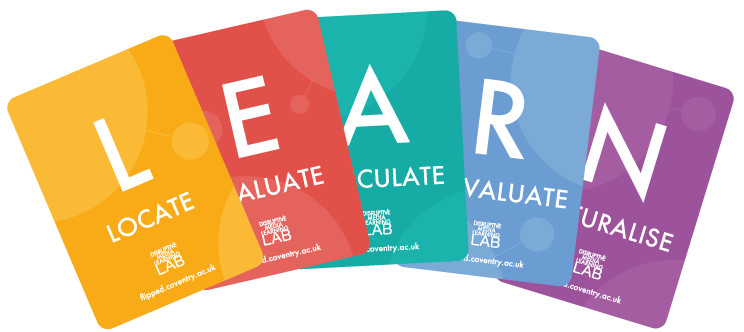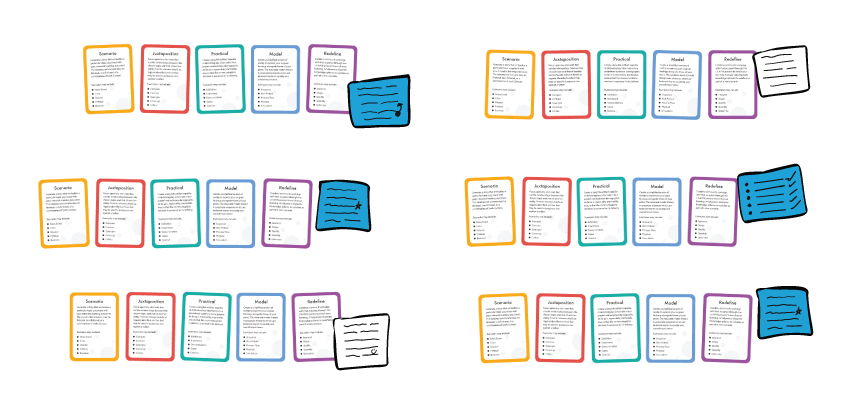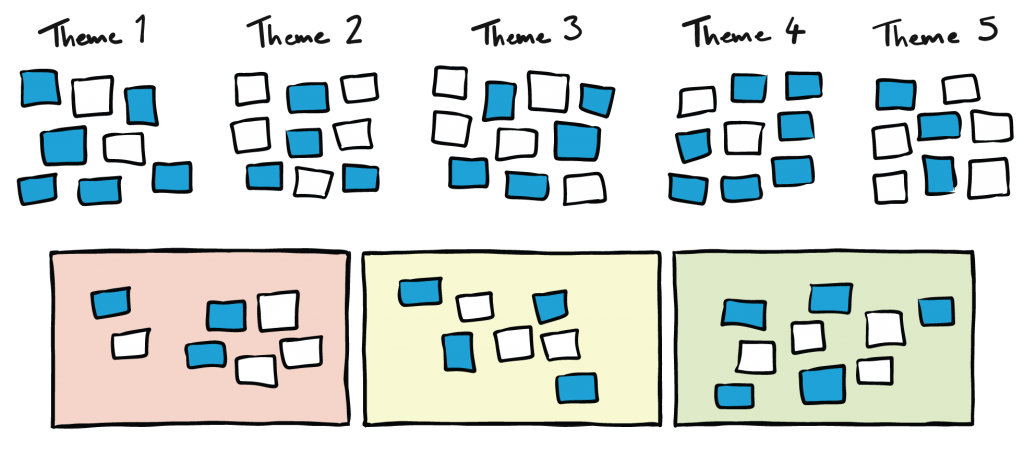Module µSPRINT
What is a μSPRINT?
A micro SPRINT is a compressed delivery model of the CU SPRINT methodology, allowing teams to solve problems and develop ideas within a one day time frame. The micro SPRINT is designed to facilitate the rapid prototyping of innovative new modules and the production of completed module information documentation (MID).
How long does it take?
The micro SPRINT framework consists of four 1 hour activities, with an optional fifth hour for consolidating ideas into formal module information documentation. These are:
-
Hour 1: Defining Module Purpose
-
Hour 2: Learning Outcomes
-
Hour 3: Assessment Strategy
-
Hour 4: Content Generation
-
Hour 5: Module Information Production (Optional)
Equipment
Below, you can find a list of all the equipment needed to deliver your own CU µSPRINT.
- Ten decks of L·E·A·R·N cards
- One roll of Magic Whiteboard paper
- Ten whiteboard pens
- Ten packs of Post-It notes
- One Sprint Timer
PRE-SPRINT
Preamble Prep
Before the team assembles for the main Sprint event, there are some foundations that will need establishing to ensure efficient and effective use of the time you have available during the process. In order to ensure the team hit-the-ground-running you’ll need to get a few things prepared ahead of time. An outline of work to date Especially Programme Specification / MIDs and associated intended learning outcomes (ILOs)
What do you want to achieve from the day?
Note down three to five critical success factors that you wish to achieve during the Sprint. These will be displayed on a white board and reviewed throughout the day to ensure the team remains on track.
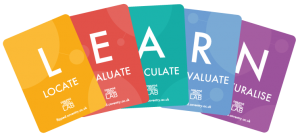 Swot-up on L·E·A·R·N
Swot-up on L·E·A·R·N
Gain a general understanding of the Beyond Flipped L·E·A·R·N cards. For more information visit: flipped.coventry.ac.uk/learn To make the most of your time during the Sprint process we strongly advise that you complete these three tasks as far as is reasonably practicable. The more prepared you are on the day, the greater your chances of achieving everything you set out to accomplish within the limited time available.
Preamble Support
CU Sprint overview and taster
To give everyone involved an idea of what to expect on the day, we have prepared this general overview of the Sprint process with descriptions of the tasks your team will undertake to achieve your intended goals. Starting with…
Reception: Define Your Teams
Ice-Breaker Exercise An important aspect of the Sprint process is to establish diverse groups before starting the first activity. This will help us to gauge the team’s current relationship with the ‘flipped’ paradigm and overall proclivity to engaging with flipped learning methods.
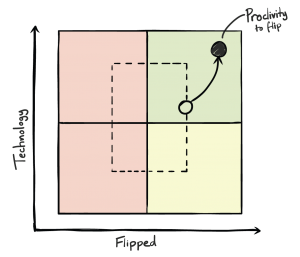 To start the session, the entire team will stand up and position themselves on a four-point scale to help gauge the room’s range of skills as regards to their experience with flipped learning and overall technology proficiency. Tip: We suggest assembling your team with a diverse skill set in mind. The more diverse your team is the better.
To start the session, the entire team will stand up and position themselves on a four-point scale to help gauge the room’s range of skills as regards to their experience with flipped learning and overall technology proficiency. Tip: We suggest assembling your team with a diverse skill set in mind. The more diverse your team is the better.
Forming Groups
Depending on the size of your team and the results of the stand-up activity, we will organise the room into smaller groups for the first half of the Sprint. This will enable the team to be as productive as possible within the limited time available.
What do you hope to achieve during this initial Sprint?
Create a rubric for assessment of critical success factors for the day.
Hour 1
Identify Needs / Identify Challenges
During the first hour of the Sprint, the team’s goal will be to identify the programme specification needs and identify any potential challenges concerning the initial proposal.
To do this, the group will consult an initial specification and use this time to note any thoughts, suggestions, questions, concerns and opinions as appropriate.
Three key areas:
-
 Identify stakeholder needs
Identify stakeholder needs -
In the case of a programme specification design, this will include students, staff and external contributors/mentors etc.
-
Identify stakeholders’ prior skills and knowledge
-
Elaborate on each stakeholder’s requirements, abilities, and potential areas of improvement.
-
Identify your programme’s ILOs
-
Evaluate any existing intended learning outcomes.
-
Identify synergies with the University’s corporate plan and 2021 strategic objectives.
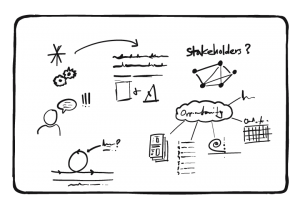 Spend some time brainstorming as a group; recording your thoughts on the mini whiteboards provided. This is your chance to note down anything and everything you can think of that might be of value to the group and the overall objectives for the day. Try to write clearly concisely wherever possible, and ensure that what you put down on the board is legible.
Spend some time brainstorming as a group; recording your thoughts on the mini whiteboards provided. This is your chance to note down anything and everything you can think of that might be of value to the group and the overall objectives for the day. Try to write clearly concisely wherever possible, and ensure that what you put down on the board is legible.
If you’re more of a visual thinker, then great! Use any method with which you’re most comfortable. We encourage you to articulate any thoughts through sketches if that makes it easier to record your thoughts.
And remember; no idea is a bad idea, so don’t hold back when jotting down your thoughts. We’re looking for quantity, not quality at this early stage.
Hour 2
Generate Ideas
Once you’ve successfully identified your programme’s needs, and identified any potential challenges, we will move on to generating new ideas for adding a variety of flipped learning methods to your programme design.
Split into pairs within your previously defined groups.
Start Flipping
Use this hour to leverage the Beyond Flipped L·E·A·R·N cards to develop potential approaches to your proposed programme content.
Take an aspect of the programme in question and apply L·E·A·R·N cards. This might be in the form of a module, a defined block of credits, or even an individual lecture or seminar.
For each L·E·A·R·N ‘narrative’ created, note the five stages on a Post-it, label it clearly, and set it to one side. Add the cards back into the deck, rinse and repeat… Or, we suggest holding these cards to one side and trying your best to use the remaining cards in your next round, to help promote a varied mix of flipped approaches).
Feel free to create multiple variants of L·E·A·R·N card ‘narratives’ for any given aspect of your programme if you wish; the more the merrier. However, we do suggest that you try to cover as much of the programme as possible within the time allocated. For more information on the L·E·A·R·N card framework visit: flipped.coventry.ac.uk/learn
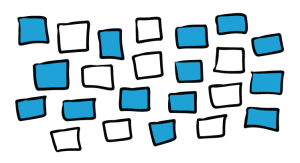 Group resultant ideas into themes
Group resultant ideas into themes
Set aside a few minutes before the hour is through in order to quickly group the various L·E·A·R·N card narratives into themes. This will make it quicker and easier to parse the results in the next stage.
Hour 3
Create Solutions
As we enter into the third stage of the Sprint session we can begin to parse the various flipped learning narratives generated during the previous hour. The aim of this hour will be to consolidate and refine the team’s strongest ideas.
Confidence Rating
As a full team, we will select one theme at a time and filter your collective ideas using a simple red, amber, green grading system to establish a confidence rating.
Now that we have a selection of ideas about which your team feel most confident, we can storyboard their implementation.
Don’t worry, any ideas that don’t quite make it into the final section may be earmarked as ‘best of the rest’. These will be a valuable asset when filling in the blanks of our storyboards during the next stage.
Storyboarding
Once a selection of exemplary ideas has been identified, the next step will be to combine them into a detailed storyboard. This is for the purpose of outlining an initial programme specification in-line with your pre-defined ILOs.
As a full team, use jumbo Post-it notes as blocks of time and lay out the structure of your programme from start to finish (Left to right). Be it individual weeks, semesters, or whole years, the time frames are entirely up to you.
Once you have established your timelines you can work together to collate your ideas underneath the corresponding jumbo Post-it. Spend some time discussing the layout as a group, and seek to fill in any gaps with ideas from your ‘best of the rest’ collection.
Build Your Programme’s Narrative
As a team, start to consolidate your chosen ideas into a draft storyboard, frame by frame. Elaborating on the concepts within each Post-it, whilst defining how they interlink to form each frame of your programme’s narrative.
Tip: The process is not limited to programme specifications; the same storyboarding technique would similarly apply to topics such as, assessment design, training programme development, and events planning.
Hour 4
Design Prototype
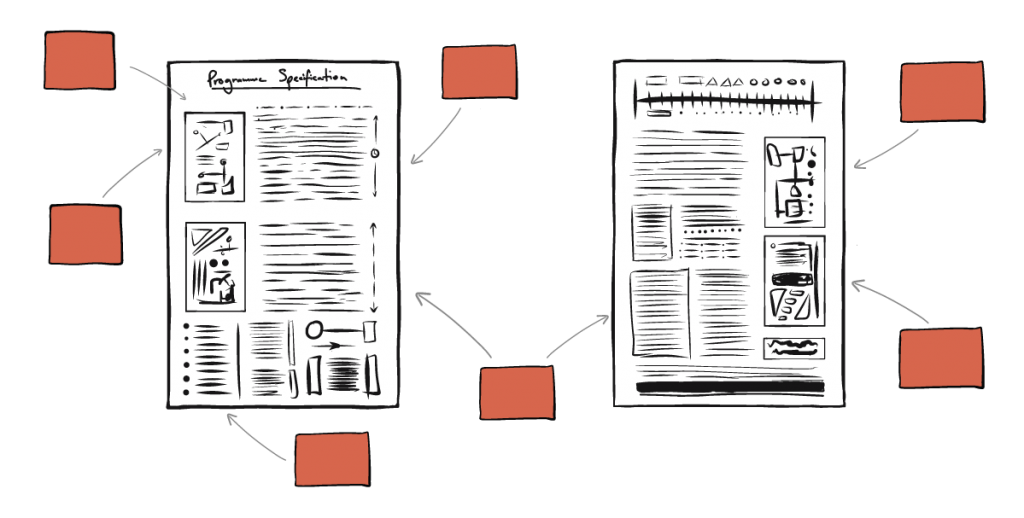 Once a strong narrative for the programme has been established, your team can begin to convert each storyboard frame into various sections for a prototype programme specification.
Once a strong narrative for the programme has been established, your team can begin to convert each storyboard frame into various sections for a prototype programme specification.
The aim is to outline every possible part of the specification – which should be based upon prior solution generation and storyboarding exercises undertaken during the previous couple of hours, ready to be formally written-up for validation.
Hour 5
Extra Time: Stress Test
Have a little extra time after the session is over? Great! We suggest taking this opportunity to put your prototype through a stress test.
As a team, try to play Devil’s Advocate for a few minutes; pose difficult questions or problems to the room and address accordingly. This may help to identify areas for improvement whilst testing the robustness of your design so as to identify any missed opportunities.
We suggest taking the time to present each section of your prototype within 5 minutes, accompanied by a 10 minute Q&A directly afterwards.
POST-SPRINT
Once you’ve completed the Sprint, it doesn’t end there: the aim of this one day exercise is to start the ball rolling within a compressed timescale.
You can take advantage of this initial session to plan follow-up workshops with a view to expanding upon your prototype. This may take the form of a five-day, full-length Sprint, designed to take your initial results and transform them from initial prototype to finished product.
For more information visit: flipped.coventry.ac.uk/sprint
Tools and Support
µSPRINT Guide
This printable µSPRINT guide provides all the information you need to deliver your own SPRINT session. Simply load it on your mobile device, or print it out, and off you go!
SPRINT Supplies Sheet
This sheet provides a visual list of recommended resources to aid you in delivery of a successful SPRINT session. Simply print out this sheet and cross off the items as you get them!
All materials are licensed under Creative Commons CC BY-NC 4.0. You can repurpose these as you see fit, all we ask is that you credit us and don’t use them commercially.

